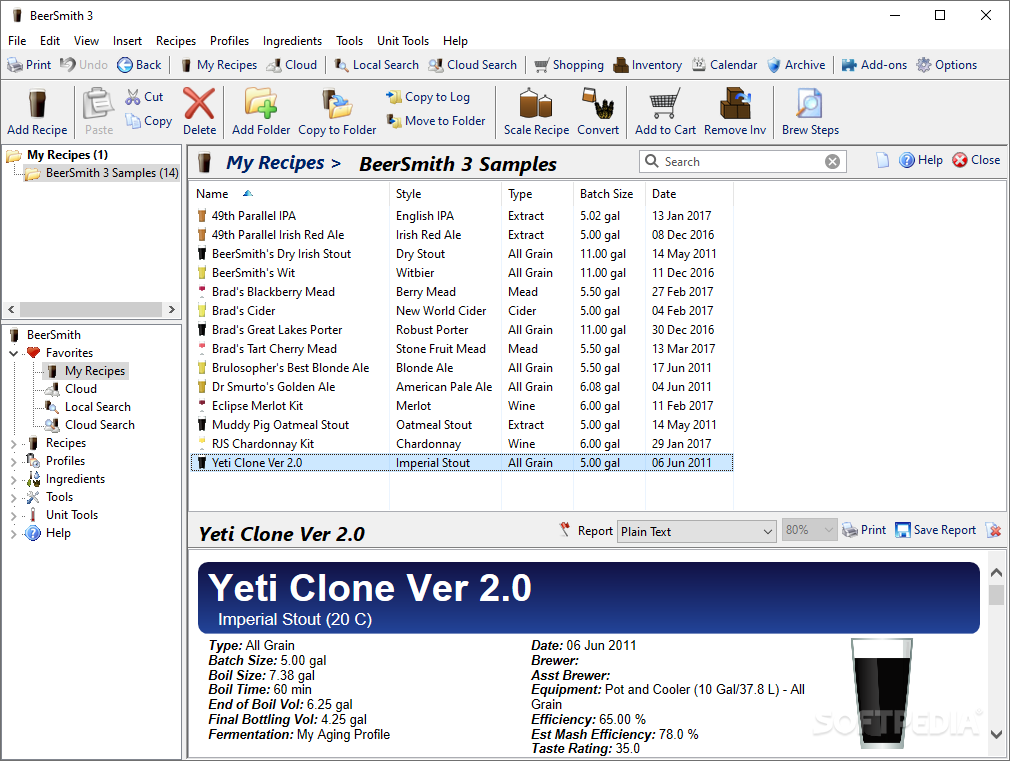

Perhaps "grain absorption" in Beersmith will be moved out of "global settings" in the future and these steps become obsoleted?Įxport the finished recipe as a "BeerXML File (*.xml)" and import into the Grainfather site (as in the linked articles). Strike temperatures will still change if global "grain absorption" is changed again (as it appears in "add nL of water at T C"), but the strike temperature used at that time is still recorded unchanged in several places. It might need repeating as the strike temperature will squirm a bit, depends how fussy you are chasing fractions of a degree! The "Grain Temp" is written twice, initially to calculate strike temperature, subsequently to hold onto the strike temperature (so it doesn't calculate again). Again on the mash page record the calculated strike temperature as "Tun Temperature" and overwrite "Grain Temperature" with it, and set it as the "Strike" step's "Step Temperature". On "brew day" record ambient temperature in the recipe's "Grain Temp" (mash page) and in the "Strike" step's "Name". To use: Include mash profile in a Beersmith recipe as before. Open the next step ("Mash Out" was my suggested name). Prefix the name with "2-" (this helps stop the steps getting out of order) and change to type "temperature". Open the next step ("Saccharification" was my suggested name). Move it to the top of the list with "Move Step Up". The "rise time" is zero and the "step time" 1 (Grainfather complains at anything less). Its "step temperature" is the same as the mash temperature in the "saccharification" step. I'll come back to why I include "ambient temperature" in the name later. I name it "1-Strike (ambient 17C)" and the "type" is "infusion".

In Beersmith open the Grainfather mash profile (menu bar, "profiles"). So I devised a work around with the profiles illustrated earlier. I'll accept that with recirculating mash systems it doesn't make any difference (initially heating to mash temperature, not strike) but decades of home-brewing means I still want to use strike temperature (old dogs, new tricks, and all that). I wasn't happy that having bought this great bit of kit (the Grainfather) I'd be steered towards not bothering with "strike temperature". I wasn't happy that if I wanted to use "strike temperature" with the Grainfather I'd have to do a bit of phaffing about (not much, but all the same.). I wasn't happy that changing "global options" would alter the calculated strike temperature in all my past logged recipes too. I think most people are losing more wort to the pile of hop/protein sludge than they realize.(EDIT : This "modification" has now been edited into the original linked documents found in the OP). Hopefully Beersmith let's you adjust that per ounce of pellet or leaf hops or something like that? If you find this to be a hard thing to measure (and it is, kind of), you can measure all the other things and back into this number to fit the result. you'll have to measure that in a real batch.
#Beersmith grain absorption software
Or better yet, use software or a spreadsheet that uses sensible parameters. You can then adjust Beersmith's percentage boiloff parameter to match the volume you measured. Do some math and see how that compares to the percentage beersmith is assuming. Then multipy by 4 to get a volume loss per hour. Measure what you're left with and subtract from 2 gallons. To roughly estimate, boil 2 gallons of water (at your normal vigor) for 15 minutes. Beersmith uses a percentage per hour? That's silly. Measure whatever ends up in your receiving vessel and subtract from 2 gallons. put two gallons of water in your empty tun, then drain by your normal method. Grain Absorption.you need to make a wort to measure this, but 0.9 gallons sound right on for 7.5 lbs of grain Click to expand.You can measure every loss, in some cases without even making a wort.


 0 kommentar(er)
0 kommentar(er)
